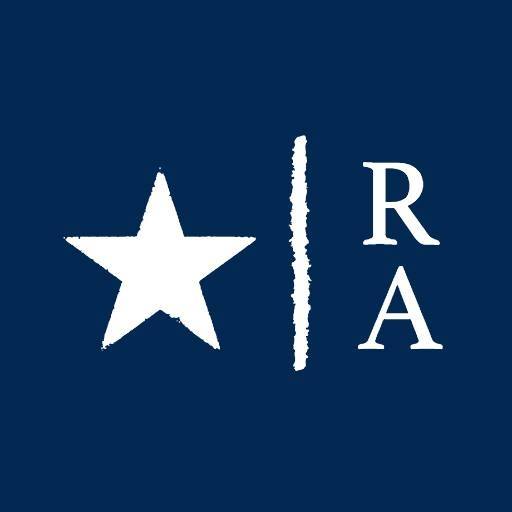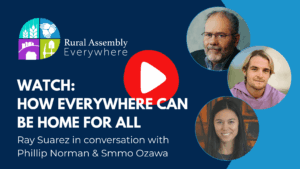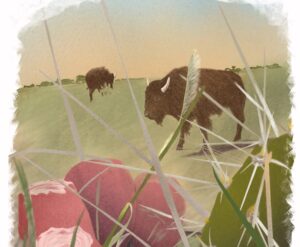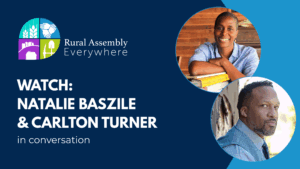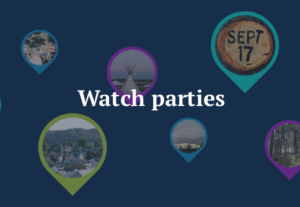By Madeline Matson, Rural Assembly Director
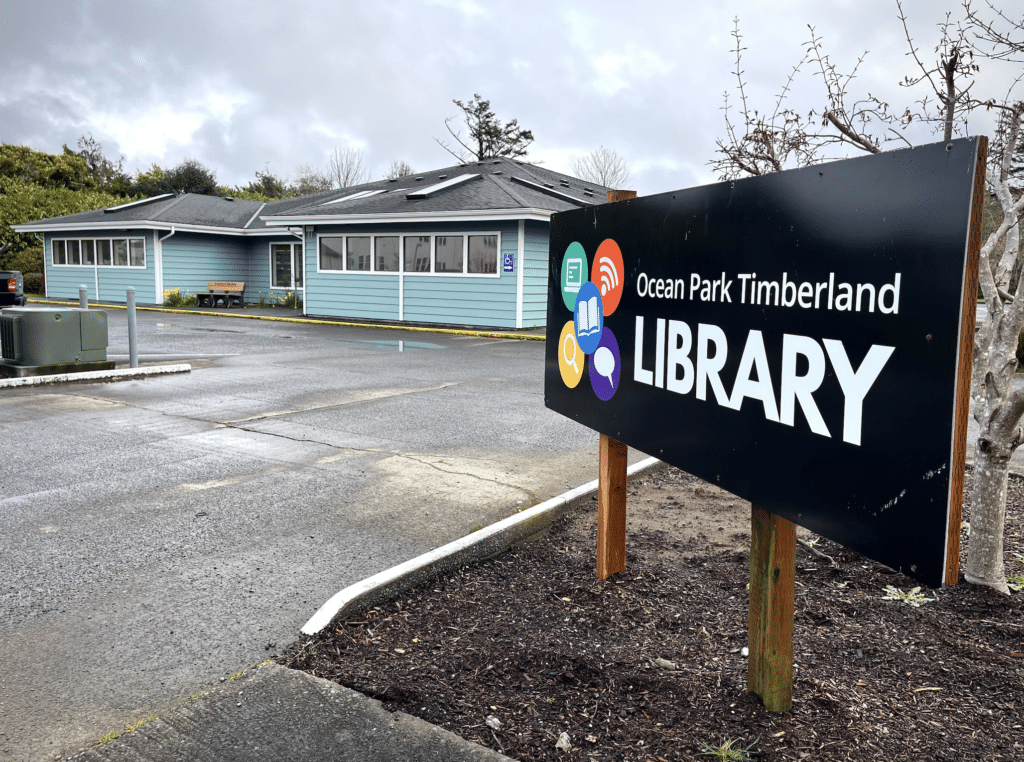
In the mid-1990s, a group of about a dozen kindergarteners left the white schoolhouse and crossed the quiet side street in rural Ocean Park, Washington. I imagine we looked much like a brood of ducklings nervously and excitedly following its mother. Paperwork in hand, we carried a gravitas with us about the task ahead.
We were headed to the library, and it was time to get our own personal library cards. I don’t remember whether the row of cherry trees in front of the library was in bloom that day, but the pastel pink puff balls that eventually littered the ground like confetti fill many of my other memories of entering the doors of Ocean Park Library. I spent so many hours in that space as a child it is hard to piece apart individual visits. My mom would bring me regularly after school and on the weekends; me in the kid area and her hidden amongst the stacks, I’m sure thankful for a somewhat silent break.
With the recent news about what appears to be an attempt to fully shutter the Institute for Museum and Library Services (IMLS) by the Trump administration, I have been thinking deeply about my personal connection to my rural library system and my very recent past as a director of a small rural museum.
The IMLS was created in 1996 and is a relatively small agency, around 70 employees, that works to supply grant funding to museums and libraries in the United States. They provide an array of grant programs that support libraries and museums of all sizes but the loss of this agency will disproportionately impact small rural organizations, advocates say. As critical cultural and community resource hubs, we should all be aware of how these cuts will directly hurt organizations, and ultimately, people across the country.
Let’s start with libraries.
What’s at Stake?
I don’t think it’s a stretch to say that the services provided by libraries, including rural ones, are incredibly exhaustive. The right question is more: what can’t you do with a library card? vs. what can you do. Libraries tend to get much of their funding through city and county taxes, but federal funding helps support new programs, increase basic services, and, particularly for rural communities, provides access to digital services such as streaming platforms like Libby.
Across the country, rural public libraries play important roles in their communities: offering access to internet services, printing, copying, scanning, genealogy resources, community classes, skill building, and language services.As a postpartum mom, Libby was an absolute lifeline. I was able to download books, for free, without going anywhere, plug in my ear buds, and proceed with a nursing session, contact nap, or stroller walk. It allowed me to tune out a bit mentally, while still being present physically. I am still a regular downloader of books on the platform as physical book reading is still a bit out of reach with two small kids.
In communities like mine, where summer programs and camps for kids are relatively minimal, our libraries fill the void with an incredibly full calendar of summer reading programs. The highlights of my childhood summers included “The Reptile Man” session and making ice cream in a plastic bag, and these same programs exist for my kids today.
Across the country, rural public libraries play important roles in their communities: offering access to internet services, printing, copying, scanning, genealogy resources, community classes, skill building, and language services. Not to mention access to a world of knowledge and information through book and media lending. And in many small communities, libraries are one of the few community meeting spaces.
During the pandemic, libraries met the moment in an astonishing way. Not only did they step directly onto the frontlines, becoming vaccination sites, but they also made that early quarantine life bearable in other small ways. My Ilwaco Library started creating “Take and Make Kits” for kids and adults alike with different craft projects. Being able to pick up a free activity to keep my daughter busy, even if for 30 minutes, did so much to lessen my mental load during that time.
Now for museums.
In 2023 we applied applied for an IMLS Inspire Grant, funding designed for small museums like mine. We did not receive it, and with what is happening now I’m so grateful. Many, if not all, of these grants are reimbursement style, which means you must spend the money first and submit for reimbursement before you get sent money from the IMLS.
With this week’s news, many museums are scrambling because it is very unclear when or if reimbursements will be made. This would have been devastating to a small budget museum like mine where every penny is spoken for and there is little to no contingency fund.
While most rural museums generally don’t rely on IMLS grants for large amounts of operational funding, it has historically been a source of funding for innovation and capacity building: two things that are often in very short supply for museums with little to no full-time staff and tiny budgets. IMLS Inspire grants offered a unique source of funding that allowed small organizations to grow and experiment and focus on projects that they might not otherwise be able to touch. With these cuts will come inevitable loss, maybe not of entire institutions, but most definitely of programs, capacity, and access.
The Real Reasons
It’s hard for me to understand on a monetary level why the IMLS, museums, and libraries have become a target. The American Alliance of Museums issued a statement saying, “There is no efficiency argument when IMLS represents just 0.0046% of the federal budget, while museums generate $50 billion in economic impact.”
According to an article in Wired, “The annual budget of IMLS amounts to less than $1 per person in the U.S. Overall, the agency awarded over $269.5 million to library and museum systems last year.”
But after reading a statement from Secretary of Labor and Acting Director of IMLS Keith E. Sonderlin, this isn’t actually about money. “We will revitalize IMLS,” writes Sonderlin, “and restore focus on patriotism, ensuring we preserve our country’s core values, promote American exceptionalism and cultivate love of country in future generations.”
Being one of those kindergarteners headed to the library, I so clearly remember handing my paperwork across the low counter to the librarian and being handed back a bendy plastic purple and green card. The blank rectangle on the back was calling for my name, so I scrawled Madeline Dickerson as carefully as physically possible, immediately regretting how long my name was because it didn’t fit nicely in the box. It felt like one of the first moments of real personhood. I was big enough to participate in something so grand and vast as the library system, and all I needed was this card.
I still have and use that original library card with that scrawled name on the back, now faded. Many Saturday mornings, I can be found with my kids at the library, me seeking a moment of solace while they play with toys that aren’t theirs, which is always more fun. I hope that our small institutions can weather yet another oncoming storm, but with less money, there will be fewer services and less accessibility.
And while I can’t say exactly what Sonderlin meant by “American exceptionalism”, in my personal experience, there are few organizations that meet that mark more wholly than a small rural library or museum.
This column was also published by our partners at the Daily Yonder.
Rural Assembly Director Madeline Matson (she/her) was raised on the Long Beach Peninsula where the Columbia River meets the Pacific Ocean, about 15 minutes from the place she now calls home.
